The RAF has formally declared Initial Operating Capability for its brand-new P-8 Poseidon Maritime Patrol Aircraft.
The British Poseidon MRA Mk1 fleet currently comprises of two aircraft with seven more to be delivered.
According to the Royal Air Force, Poseidon will now be patrolling the seas, “hunting potentially hostile submarines and helping to defend our nuclear deterrent”.
Air Commodore Richard Barrow, Poseidon Senior Responsible Owner said:
“We’ve just declared an initial operating capability for our Poseidon aircraft, on time on 1st April 2020. It’s a really exciting time for us in this programme, which is moving fast and the team at RAF Lossiemouth has delivered some great results in very quick time. We’ve still got a long way to go with introducing this next generation capability into Service, but Poseidon is a game-changer, not just for hunting submarines but for a range of other roles from anti-ship warfare, maritime reconnaissance and long-range search and rescue tasks.”
The RAF added in a release:
“It uses the very latest in cutting-edge technology to detect, identify and monitor hostile contacts both above and below the waves. It can carry up to 129 sonobuoys to search for enemy submarines and can be armed with Mk54 torpedoes if required to attack enemy submarines. Our Poseidon aircraft are operated by 54 Squadron and 120 Squadron, who are currently flying from Kinloss Airfield in Moray, Scotland. Poseidon will move to its permanent home at RAF Lossiemouth later this year once the refurbishment work on the runways and airfield infrastructure has been completed, including the new Strategic Facility which is being delivered by Defence Equipment and Support. Our second Poseidon squadron, Number 201 Squadron, will also stand up later this year.”
Recently, Boeing announced a temporary suspension of KC-46 tanker and P-8 Maritime Patrol Aircraft production operations at its Puget Sound area facilities in light of the accelerating spread of Coronavirus.
Boeing said in a news release that these actions are being taken to ensure the well-being of employees, their families and the local community, and will include an orderly shutdown consistent with the requirements of its customers.
“Boeing plans to begin reducing production activity today and projects the suspension of such operations to begin on Wednesday, March 25, at sites across the Puget Sound area. The suspension of production operations will last 14 days, during which Boeing will continue to monitor government guidance and actions on COVID-19 and its associated impacts on all company operations. During this time, we will be conducting additional deep cleaning activities at impacted sites and establishing rigorous criteria for return to work.”
Puget Sound area facilities includes facilities where the KC-46 and P-8 are being produced the company have confirmed and it has been speculated that there may be a delay with regards to the delivery of the aircraft to customers..
“This necessary step protects our employees and the communities where they work and live,” said Boeing President and CEO Dave Calhoun.
The United Kingdom has ordered 9 boeing P-8A Poseidon Maritime Patrol aircraft, much of the fleet are still in build at the now closed Boeing facilities.



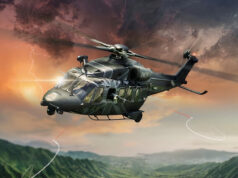
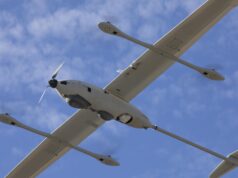
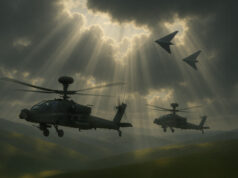
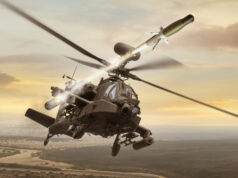
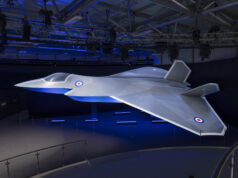
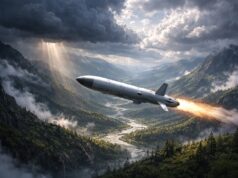
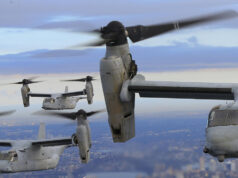


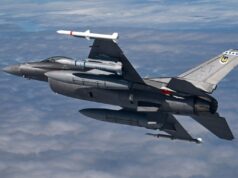

3 Squadrons for 9 aircraft? What is the reason for that?
I was thinking two squadrons was too much! I doubt we will get more aircraft to fill out the 3 squadrons either! One must be training ect though but we still will only have 9 total! Bare minimum, actually I read 17 was what we needed as a bare minimum to fulfill all our future operations.
I realised after I posted that 54 is the Training Squadron for all ISTAR aircraft, so that sort of makes sense…. but surely only 1 active squadron would be needed alongside that? Must be more expensive to run 2 active squadrons which presumably share 7-8 aircraft out of the 9
We will never have 9 in service, by the time 7 to 9 appear 1 & 2 will be obsolete, out of service or have suffered a hard landing or similar which will make a return to service unviable and there won’t be an attrition replacement. We need at least 12 but as a joint force in the primary theatre of operations there will be 18 (RAF, RNoAF, USN) with @ 12 readily available.
It should be noted that HM Coastguard, Scottish Fisheries and other bodies have permanent fixed wing assets now that can fulfil roles that Nimrods would have been called for 20 years ago so the Poseidon taskings are specific to warfare.
COVID is going to kill the defence budget once and for all, it will be political suicide for anybody that puts up a case for defence when in reality we need it now more than ever.
The Cold War is back and some, espionage, assassinations, bio and chemical warfare, Submarines are going to be snooping more than ever, our attack sub fleet will never be more than 3 or 4 deployed at any time.
The West are being totally blind if they don’t see what’s going on.
Squadrons tend to be grouped by number of personnel rather than airframes. These aircraft have large crews and teams of engineers so the squadrons are very much smaller in terms of airframes. I’m not sure that 9 is enough for 2 squadrons plus training and long term maintenance commitments personally – let alone the requirement which may well expand anyway. Hopefully more airframes can be added at a later date
Maybe each aircraft will have 9 drones.
The 3 Squadrons are actually 2 Squadrons with crews, sharing a pool of aircraft. There will be plenty more crews than aircraft so 2 operational squadrons seems logical to me.
Naming the “3rd squadron” is confusing, as No 54 is an ISTAR trials unit at Waddington and has no assigned aircraft.
By comparison, if memory serves me the previous Nimrod force with 40 plus aircraft was 120, 201, 206 and I forget the OCU. 42?
Hi Daniele, 236 Operational Conversion Unit – later renumbered to 42 (R).
But I cheated – and picked that up from Wikipedia!
Ha! And when I posted that comment Alan I thought if you were about you’d be the man to comment. And here you are.
Thanks. 236? Nah, I would never have remembered that. I remember most of the re numbered OCU that used the number plates of disbanded front line units, much easier!
So following that logic was 42 also a Nimrod outfit? My turn to cheat…
Yes, 42 was another one. An Options for Change victim. At St Mawgan too.
Hi Daniele, Yeah – between the two of us, I think we’ve pretty much got “RAF-geek” covered on this forum! LOL
I hope you and your family are keeping well, my friend. Alan
Thank you Alan.
54 is the ISTAR OCU mate; ISTAR / C2 trials are the remit of 56. But you’re correct – the OCU has a pool of various platforms, the trials Sqn work on the ac of other Sqns while having none of their own.
Thanks WeeWill.
Thanks Julian and Daniele for your clear explanations
An Air Commodore to be responsible for a whole 9 aircraft…. well these lads need to feel important I guess.
The SRO is responsible for the whole programme costing billions, not just 9 aircraft.
I know there is often sniping about too many 1 star and above here and elsewhere but with a huge organisation such as the MoD and it’s thousands of directorates it is often necessary.
What would be more appropriate? Group Captain maybe?
Our Forces are obscenely top heavy.
How do other nations compare on that issue? No idea. There have been plenty of cuts of 1 star and above since 1995 Front Line First, and just in the last year another culling of the RN 1 star and above set up.
About 2011ish I went through the Navy List (I was at sea and bored) and there were something like 36 Admirals, 60 odd Commodores and 204 4 ring Captains in the RN. All included in the circa 36 thousand total number that were in the navy at the time.
A year or two later when we got a visit from an Admiral to tell us the details of the next round of redundancies he did say (when I brought it up) that there were now less Admirals but there were more Commodores…. however you dress it up, that’s a lot of gold for not a lot of ships.
Agreed Andy.
Is it not also the case though that where the ships are constantly removed in 20 years of cuts, the organisation behind it remains.
Most of those Admirals will be Rear, they are not full Admiral, as you know.
As a RN man, you will know more than me that an organisation such as the RN needs people in charge of the hundreds of directorates it comprises.
So what rank should they be to enable a proper career path, save money,chances of promotion, and so on?
In the last changes I read the fleet directorates are now run by Commodores, rather than Rear Admirals.
Not disputing your opinion at all just openly wondering what the solution is. An organisation of hundreds of people needs an officer of a certain rank. What is appropriate?
that was very quick One has to wonder why.
I wonder if we’re on the list?
DoD contracts 790 JASSM-ER missiles for US and FMS customers
https://www.janes.com/article/95283/dod-contracts-790-jassm-er-missiles-for-us-and-fms-customers
Australia, Finland & Poland currently operate this missile.
This is great news. It is good to see we are back in the maritime patrol game again after the short sighted treasury driven defence review.
I recall these planes have US MK46 and Harpoon. Is there going to be a swap to Stingray and a new anti-ship missile?
I wonder how much procurement is going to be affected by the Shutdown? It’s the whole supply chain as well!
Is there effective social distancing at Abbey Wood, a large office complex of several thousand people?
That goes for other defence sites too.
The IOC is great news for the RAF.
All that is needed now is a way to negotiate getting an air-tanker with a boom to support them (as well as the C-17 Globemasters and the imminent E-7 Wedgetails)
Hmmmph… Still think the RAF should renovate a bunch of Shackeltons and put them back in service. Now THAT was an aircraft… Bet a Swordfish could fly off the QEs too. Fine aircraft. Would add a lot to the RN’s strike capability.
Cheers!
Useful info about the crewing of the squadrons in this article. 18 active crews for 9 aircraft, split between 2 operational squadrons
https://www.savetheroyalnavy.org/restoring-the-uks-maritime-patrol-aircraft-capability-part-3/
Thank you Andy.